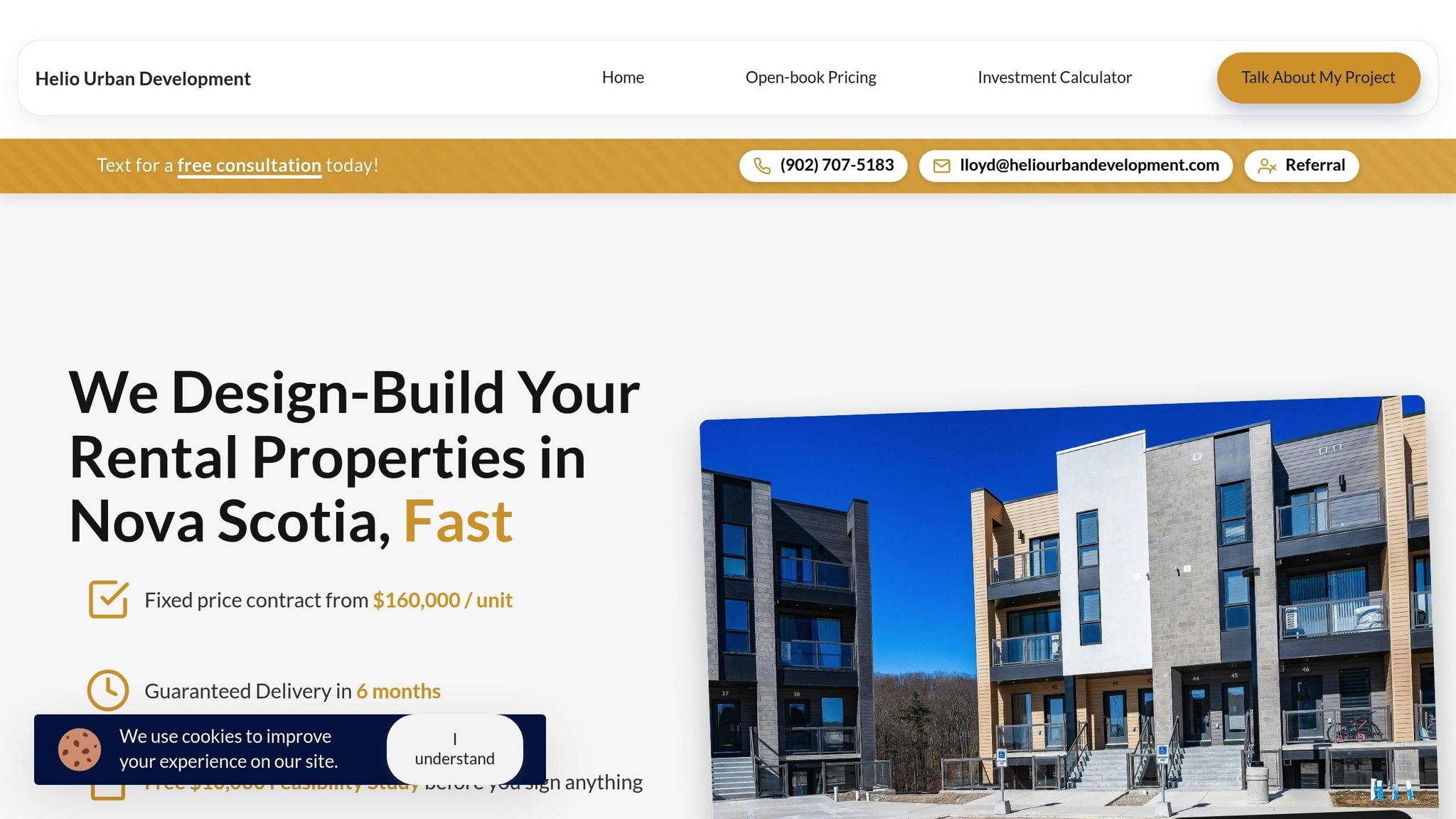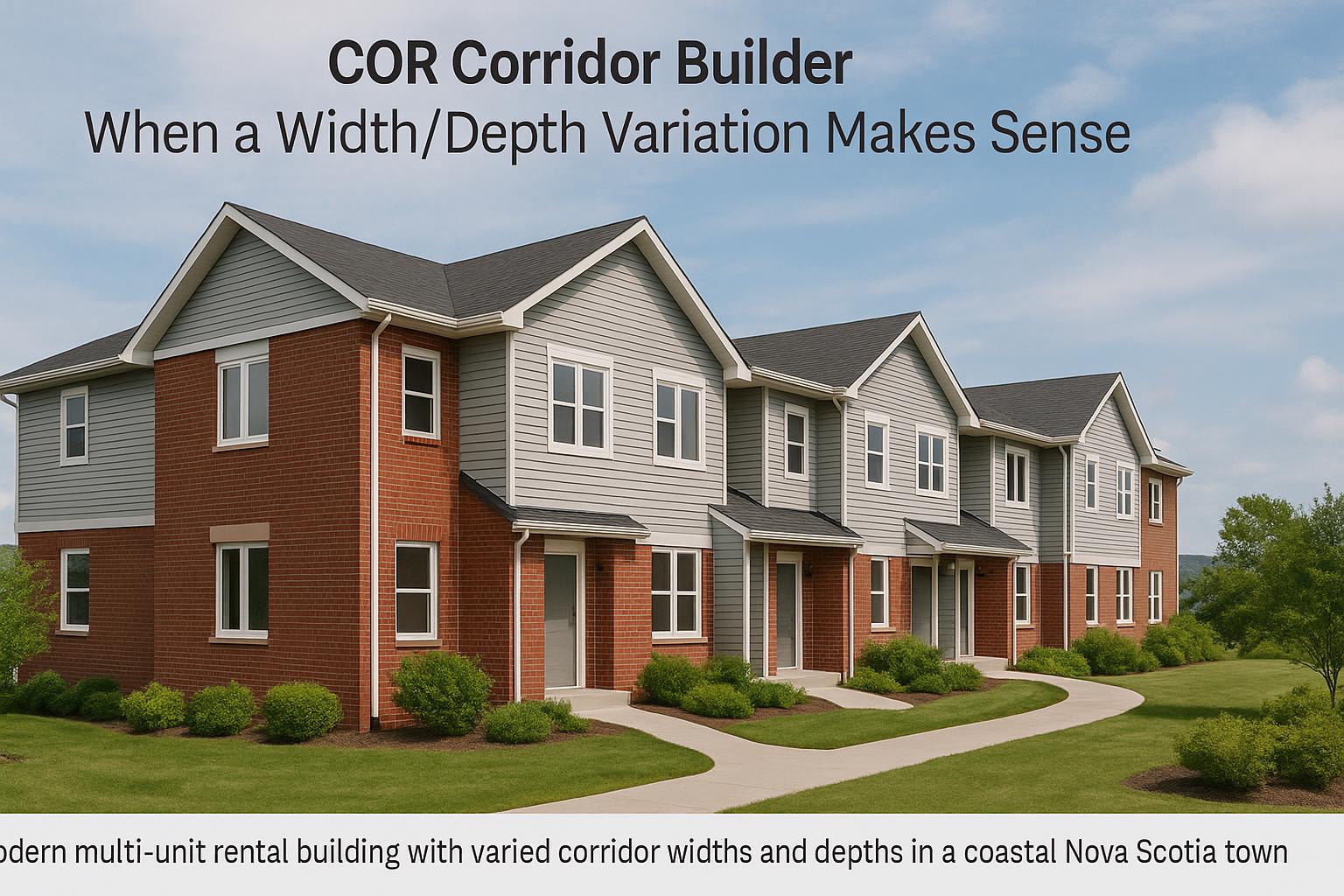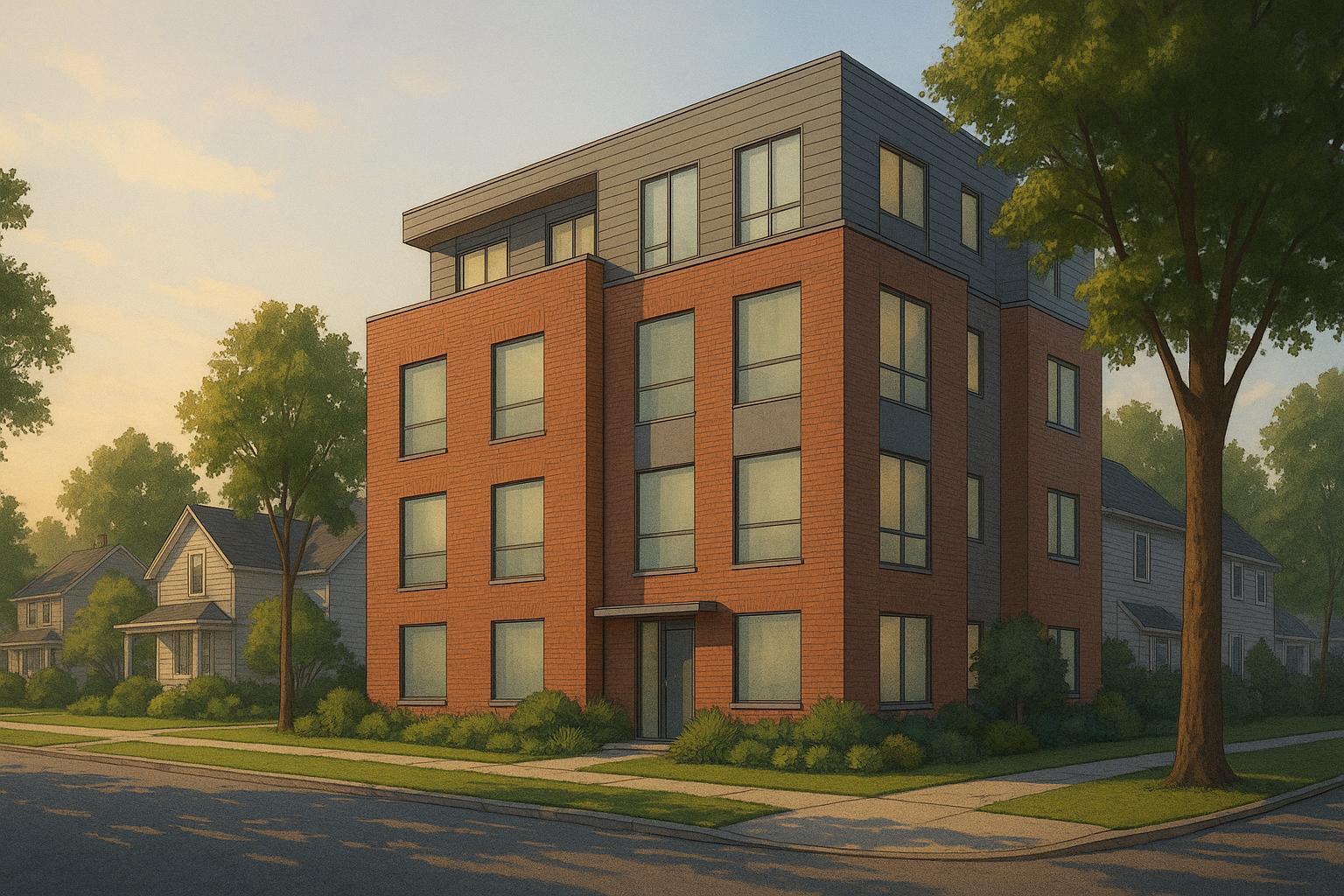Universal design and aging-in-place principles are essential for creating rental properties that work for everyone, regardless of age or mobility. With Nova Scotia’s aging population and growing demand for accessible housing, property owners can future-proof their investments by incorporating these features from the start. Here's why it matters and what to include:
- Why It’s Important: Nova Scotia has a rising need for accessible rental units. Retrofitting older properties is costly, while building with universal design saves money and attracts long-term tenants.
- Key Features: Step-free entrances, wide doorways, lever handles, reinforced walls for grab bars, and flexible bathroom and kitchen layouts.
- Benefits: Reduced turnover, lower vacancy rates, and eligibility for financial incentives like CMHC programs.
Core Universal Design Principles for Multi-Unit Rentals
The 7 Universal Design Principles
The seven Universal Design principles provide a framework for creating rental properties that are inclusive and functional for everyone.
Equitable Use ensures that spaces are accessible and appealing to individuals with varying abilities [1]. For example, all entrances and common areas - like mailrooms, laundry facilities, and community rooms - should be accessible to everyone. Instead of designating a separate accessible entrance, all main entryways should reflect inclusivity.
Flexibility in Use supports different preferences and abilities [1]. Think ahead by including features like reinforced walls for future grab bars or adjustable shelving. These small steps can save time and money by reducing the need for major modifications later [3][4].
Simple and Intuitive Use focuses on making spaces easy to navigate and understand, regardless of a person's knowledge, language, or level of focus [1]. This can be achieved with clear signage, user-friendly controls, and logical layouts throughout the property.
Perceptible Information ensures that critical information is effectively communicated to everyone, regardless of sensory abilities or environmental conditions [1]. For example, use consistent task lighting, non-glare surfaces, and contrasting colours to highlight edges and boundaries clearly [4].
Tolerance for Error reduces the risk of accidents or unintended actions [1]. Features such as non-slip flooring, well-lit pathways, and thoughtfully placed fixtures help create a safer environment for all residents.
Low Physical Effort makes spaces more comfortable and efficient to use, requiring minimal exertion [1]. Examples include lever-style door handles, automatic doors, flat-panel switches, no-step entrances, and front-loading laundry machines [1][3][4]. These features are helpful for everyone, from seniors with arthritis to busy families.
Size and Space for Approach and Use ensures that spaces are accessible regardless of a person’s size, posture, or mobility [1]. For instance, step-free entrances, doorways that are 32–34 inches wide, and hallways at least 42 inches wide provide the necessary space for easy movement [3][4]. These considerations form the backbone of practical and inclusive design.
Universal Design vs Accessibility vs Visitability
To fully optimize rental spaces, it's important to understand the differences between universal design, accessibility, and visitability.
- Accessibility focuses on meeting minimum standards to accommodate disabilities. It ensures that essential features are in place to comply with legal requirements.
- Visitability prioritizes basic features like a zero-step entrance, wide doorways, and a main-floor bathroom, making it easier for people with mobility challenges to visit, even if the space isn’t fully adapted for long-term living.
- Universal Design takes a broader approach. It aims to create environments that are functional for everyone from the outset. Unlike accessibility, which meets baseline requirements, universal design considers the full spectrum of human diversity to create spaces that are inclusive and seamless for all [1]. For rental properties in Nova Scotia, adopting universal design enhances both usability and appeal.
How Universal Design Future-Proofs Your Property
In Nova Scotia’s changing market, universal design principles can significantly boost tenant satisfaction and property value. With the province’s aging population, the demand for inclusive and accessible living spaces is on the rise [1]. The Canada Mortgage and Housing Corporation (CMHC) has developed a Universal Design Guide tailored for multi-unit residential buildings. This guide helps property owners create spaces that are safer, easier to use, and adaptable as residents’ needs evolve [2][5]. By integrating these principles, properties can accommodate changing needs without requiring costly renovations, ensuring long-term functionality and appeal.
Aging in Place: Universal Design
Must-Have Universal Design Features to Include from Day 1
When planning a space, incorporating universal design features right from the start is a smart move. It not only ensures your property remains accessible to a wider range of tenants but also protects your investment as tenant needs evolve over time [6]. Designing for everyone - regardless of age, size, or ability - means creating spaces that are functional, inclusive, and practical.
Step-Free Entrances and Pathways
A step-free entrance is a cornerstone of accessibility. By designing flush, level entryways, you make life easier for mobility-aid users, parents with strollers, and anyone carrying heavy items. It’s a simple feature that has a big impact on usability.
Door and Hallway Clearances
Wide doorways and hallways are a must for ensuring smooth movement throughout your property. Whether accommodating mobility devices or just making daily tasks more convenient, these spaces promote ease of access for everyone.
Hardware and Controls
Opt for lever-style handles, which are easier for seniors and people with limited hand strength to use. Additionally, place light switches, electrical outlets, and other controls at reachable heights to ensure they’re convenient for all tenants.
Flexible Bathroom and Kitchen Designs
Bathrooms and kitchens designed with flexibility in mind can adapt to future needs. For bathrooms, consider layouts that allow for the easy addition of grab bars or roll-in showers. In kitchens, plan for adjustable counter heights and layouts that work for both seated and standing users. These thoughtful touches make your property more accommodating over time.
sbb-itb-16b8a48
The Business Case: How Universal Design Increases Property Value
Adding universal design features to multi-unit rental properties isn’t just about inclusivity - it’s also a savvy financial move. These thoughtful design elements cater to a wide range of tenants, including families with young kids, busy professionals, seniors, and those with temporary mobility challenges. Properties with accessible features often experience shorter vacancy periods and better tenant retention, which means lower turnover costs and more consistent income.
Attracting More Tenants and Reducing Vacancy Risk
Universal design has the power to draw in a diverse pool of tenants. These features make properties more appealing to a broader audience, leading to more rental applications and faster occupancy. This reduces the financial risks and headaches that come with prolonged vacancies.
Cost Comparison: Building Universal Design vs. Retrofitting Later
Incorporating universal design from the start of construction is significantly more cost-effective than making changes later. Retrofitting often comes with higher expenses, potential income loss from vacant units during renovations, and disruptions for existing tenants. By planning for accessibility from the outset, property owners can sidestep these challenges and avoid unanticipated costs.
For example, Helio Urban Development offers a fixed-price model of $160,000 per unit that includes standard universal design features. This integrated design-build approach simplifies the process, reducing coordination issues and preventing cost overruns that can arise when retrofitting accessibility features with multiple contractors. Additionally, local incentives make this approach even more affordable.
Nova Scotia Incentives and Programs for Accessible Housing
In Nova Scotia, financial programs make accessible housing even more appealing. Helio Urban Development benefits from CMHC MLI Select Construction tiers, which provide higher financing ratios and extended amortization periods. These incentives improve cash flow and return on investment (ROI), making universal design not just a socially responsible choice, but also a financially smart one.
Integrated Construction: Avoiding Common Construction Problems
Creating spaces that meet universal design standards requires more than just good intentions - it demands a well-coordinated team. Traditional construction methods, which often involve juggling multiple independent contractors, can lead to miscommunication, delays, and unexpected costs. An integrated design-build approach solves this by bringing everyone together under one roof. With all key players aligned, decisions are streamlined, risks are reduced, and universal design goals are achieved more efficiently.
Multiple Contractors vs Integrated Construction: A Comparison
| Aspect | Multiple Contractors | Integrated Construction |
|---|---|---|
| Accountability | Separate contracts often lead to blame-shifting when problems arise. | A single point of contact takes responsibility for all design and construction decisions. |
| Timeline Control | Projects can stretch over 12–18 months, with frequent delays. | Construction is completed in just 6 months, with penalties for any delays. |
| Cost Predictability | Budgets often spiral 30–60% beyond initial estimates. | Fixed-price contracts lock in costs upfront, reducing the risk of surprise expenses. |
| Coordination | Property owners must manage multiple professionals, leading to inefficiencies. | A single company handles all coordination, saving an average of $47,000 in wasted resources. |
| Quality Control | Standards can vary widely between contractors. | A unified quality system, backed by a three-step verification process, ensures consistent results. |
| Communication | Updates are scattered across emails, calls, and meetings. | A single project portal provides daily photo updates, keeping property owners informed throughout the build. |
Helio Urban Development's Fixed-Price Construction System

Helio Urban Development has redefined how design and construction come together, ensuring universal design features are delivered without compromise. Co-founder Lloyd Liu started the company after witnessing the chaos of poorly managed contractors. Helio's fixed-price model eliminates cost surprises, while its 6-month construction guarantee - backed by penalties of $1,000 per day for delays - protects rental income. For example, a six-month delay on a fourplex generating $7,800 per month could mean losing tens of thousands in revenue.
To maintain quality, Helio employs a three-step verification process. A Professional Engineer oversees the project through five scheduled inspections, and property owners can choose their final inspector. This system ensures that essential universal design features - like step-free entrances, wider doorways, and adaptable bathrooms - are seamlessly integrated. By delivering on time and maintaining high standards, Helio ensures these features support both accessibility and long-term durability.
The ROI of Guaranteed Timelines and Delivery
Reliable construction timelines don’t just reduce stress - they directly protect your bottom line. Helio Urban's commitment to completing projects in 6 months minimizes lost rental income and additional carrying costs. For property owners, this consistency translates into higher ROI. Real-time updates through the project portal add another layer of transparency, reducing uncertainty and keeping everything on track. With Helio, predictable timelines and quality delivery go hand in hand, ensuring universal design features are built to last.
Conclusion: Building a Future-Ready Investment
Incorporating universal design and aging-in-place features into your multi-unit rental property isn’t just a thoughtful choice - it’s a smart investment. With Nova Scotia’s aging population and shifting rental market demands, these features are becoming essential for long-term success. For property owners, prioritizing these elements from the start is a strategic move that pays off in both the short and long term.
Key Takeaways for Property Owners
Universal design features - like step-free entrances, wider doorways, and accessible bathrooms - do more than make properties inclusive. They expand your tenant pool, reduce vacancy periods, and can even justify higher rental rates. These upgrades transform your property into a resilient, high-value asset that stands strong against demographic changes.
The financial argument is equally compelling. Adding these features during the initial build is far more cost-effective than retrofitting later. Plus, properties with these features often see a significant boost in rental income potential.
Taking an integrated construction approach ensures every detail is executed seamlessly - from entrance ramps to grab bar reinforcements in bathrooms. This method avoids the headaches of juggling multiple contractors and ensures a smooth, reliable process. When universal design is critical to your property’s success, you need a construction strategy that delivers precision and dependability.
Helio Urban Development: Your Partner in Accessible Housing
Helio Urban Development embodies the integrated construction approach property owners need. Specializing in 4+ unit rental properties, Helio incorporates universal design principles right from the ground up. With 31 units currently under construction and plans for 131 more across Nova Scotia, Helio has proven its ability to blend accessibility, style, and budget seamlessly.
What sets Helio apart is their commitment to quality and efficiency. Their construction guarantee ensures projects are completed on time, while their triple quality verification process and daily photo updates provide peace of mind for property owners.
"I personally guarantee every timeline because I've felt the pain of construction delays."
- Lloyd Liu, Co-Founder & CEO, Helio Urban Development
For property owners looking to create accessible, future-ready rental properties, Helio’s integrated approach eliminates the typical challenges of universal design implementation. Their expertise ensures every feature is built to professional standards, giving you a property that’s ready to meet the demands of Nova Scotia’s evolving rental market.
Building universal design features from the start isn’t just about doing the right thing - it’s a smart business decision that positions your property for long-term success. Helio Urban Development can help you make that vision a reality.
FAQs
What are the financial advantages of including universal design features in rental properties from the beginning?
Incorporating universal design features into rental properties right from the beginning can lead to considerable financial advantages over time. Features like step-free entrances, wider doorways, and bathrooms designed for flexibility not only improve accessibility but also make properties more attractive to a broader group of tenants, including seniors and those with mobility challenges.
Addressing accessibility needs early can help property owners save on future renovation costs, lower vacancy rates, and attract tenants who are more likely to stay long-term. Plus, properties with these thoughtful design elements often have a higher market value, making them a savvy investment choice.
What’s the difference between universal design, accessibility, and visitability, and why are they important for rental properties in Nova Scotia?
Universal design aims to create spaces and products that work for everyone, regardless of age, ability, or mobility, without the need for later modifications. In contrast, accessibility focuses on meeting specific standards to accommodate individuals with disabilities, while visitability ensures homes are easy to access for guests with mobility limitations.
By integrating universal design elements - like step-free entrances, wider doorways, and flexible bathroom layouts - right from the construction phase, rental properties in Nova Scotia can become more inclusive and practical. This not only addresses the needs of an ageing population but also boosts property value and broadens tenant appeal.
What are the challenges of retrofitting older rental properties for universal design, and how can they be minimized?
Retrofitting older rental properties to incorporate universal design often comes with its fair share of hurdles. Structural modifications, unexpected issues lurking within the building, and the risk of escalating costs and timelines can make the process daunting.
To tackle these challenges head-on, begin with a thorough property assessment to pinpoint potential obstacles before they become major problems. Partner with contractors who have a solid grasp of universal design principles and can offer practical, building-specific solutions. Careful planning and addressing concerns early can go a long way in making the renovation process smoother and more budget-friendly.



